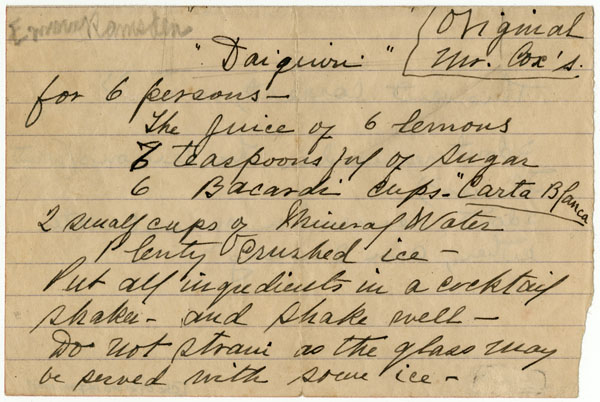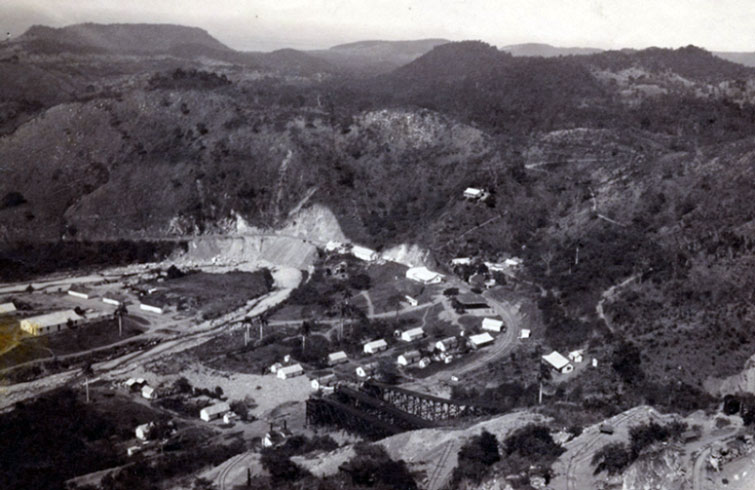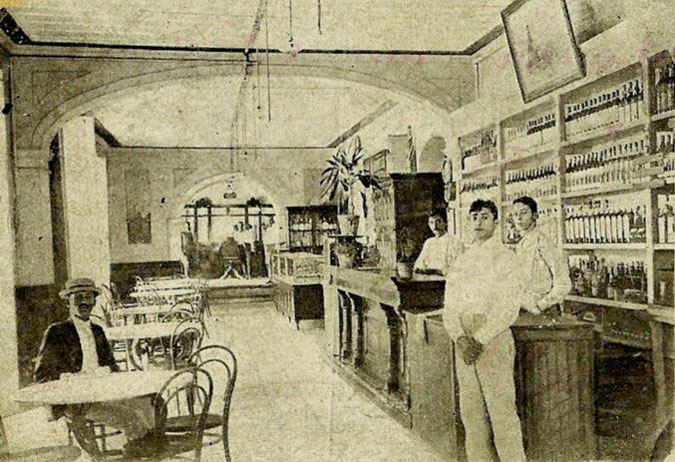It is usually thought that the coveted daiquiri, one of Cuba’s emblematic cocktails, was born at El Floridita, Havana’s most famous bar. Its paternity has been attributed, indistinctively, to the well-known bartender Maragato (Emilio González) or to his famous heir Constante (Constantino Ribalaigua).
But the truth is as different as distant. Its origin is located 1,000 kilometers from the Cuban capital, in the eastern region of the island. And although an exact date does not exist, its birth occurred during the post-Independence War stage, in 1899 or 1900.
Daiquiri is the name of a beach located more than 30 kilometers east of Santiago de Cuba. The U.S. Army landed through this place in 1898 to interfere in the war between the Cuban independence fighters and the Spanish troops. In addition, since the decade before, U.S. corporations were exploiting the iron mines close to the surface next to the riverside.
Jennings S. Cox, general manager of the Spanish-American Iron Company was one of the U.S. engineers in that colony, in the late 19th century. At that time, U.S. soldiers, merchants and tourists were regulars in the bars of the island, and Cox was among the devotees of drinks.
Moreover, as part of the assigned wage, the administrative personnel of the mine received a monthly gallon of the best Santiago run: the Bacardí Carta Blanca. Not given to drinking the hot aged rum on its own, the Americans dedicated some hours to experimenting with methods to make it milder. In this way they soon noticed that it was easily mixed with different elements.
In one of his regular alchemist rushes, it occurred to Cox, by pure whim or chance, to combine in the same recipient the light rum with lemon juice. He also added some teaspoons of sugar to level the flavor, as well as crushed ice with the idea of mitigating the infernal heat of eastern Cuba. The combination made, he stirred strongly the liquid…. Tasted it…. Eureka. He had gotten just what he wanted. Everyone who tasted the refreshing and unprecedented drink liked it as if by magic.
Although he wasn’t a bartender or anything of the sort, Cox sensed something about what he had achieved. Undoubtedly, it wasn’t an ordinary discovery, so he decided to register the formula in his personal diary.
– The juice of 6 lemons
– 6 tablespoons of sugar
– 6 cups of Bacardí Carta Blanca
– 2 small cups of mineral water
– Crushed ice
It served six servings.

Original recipe of the daiquiri registered by Jennings S. Cox in his diary. Photo: Ignacio Fernández Díaz’ archive.
The Italian boost
A short time after his “discovery,” Cox received in Daiquiri the visit of Francesco D. Pagliuchi, of the copper mines of El Cobre. The Italian engineer had won the rank of captain in the Liberation Army for his relevant services in the Department of Expeditions. After a working meeting, the visitor asked if there was something to drink.
The host did not have at hand gin or vermouth, so he used his new discovery. With rum, lemons, sugar and ice he prepared the drink, carefully following the proportions in his agenda; he mixed it and served the cold mixture, without sifting it.
After drinking it, the Italian wanted to know the name of such a delicious and refreshing drink. “rum sour,” replied its inventor, who surprised by the question thought of comparing it to the whisky sour that was made in the United States with whisky, lime juice, sugar and ice.
Mr. Francesco, however, considered the name was incorrect. “Why not call it daiquiri?” he suggested to Cox, as a compliment to the remote place between the sea and the sierra in which the mixture was created.

Years later, Pagliuchi would take the next step of the daiquiri to fame. In Cuba, he narrated to the editor-in-chief of the newspaper El País, in Havana, the “true version” of how the glorious cocktail was invented.
“Afterwards, we went to Santiago de Cuba: in the bar of the American Club we asked for a daiquiri, the bartender said he didn’t know what it was. Then Cox explained to him how to make it. Some friends who were in the bar also asked for a daiquiri. They all liked it, and very soon that cocktail became popular in Santiago, from where it passed to Havana and today it has world fame,” the Italian engineer summed up.
Other versions
When writing the memories of his trip to Santiago de Cuba, journalist Basil Woon differs in some details of what was said by the Mambí engineer. In his book When It’s Cocktail Time in Cuba, he localizes the emergence of the drink in the bar of the Venus Hotel, no longer existing today and that was located on a side corner of the Plaza de Armas, in the city of Santiago.
A group of employees of the mining company frequently met at the bar at nine in the morning. A “not very civilized hour,” said Basil, “to have a drink.” Each one used to order three and four cocktails each time. Cox was always among them.
One morning, said the journalist, the manager asked for the attention of his subordinates and bar mates: “We have been drinking this drink for a while, but we have never given it a name. So let’s baptize it!” he told them.
“We all worked in Daiquirí and we have all had that drink for the first time here, so let’s call it daiquiri in its honor,” said Cox. And raising their cups, the guests responded with pleasure to their boss’ proposal.

Jennings Cox’s granddaughter would contribute another perspective of the story. According to her version, it was the shortage – which is always the mother of invention – which drove her grandfather to procure a replacement because of the lack of his traditional gin tonic. When modifying the recipe with the use of rum instead of gin, she says, Cox came up with the daiquiri.
There are also those who associate the drink’s roots to the Mambí independence fighters, who consumed homemade sugarcane spirits with honey, lemon and completed it with water. The canchánchara, which is how this concoction is called, evolved almost naturally because it was made with the resources at the reach of the rebels.
But no matter the route followed by Cox to found or pirate the combination, the truth is that he was the pioneer in canonizing the drink based on Cuban rum. It is not in vain that after more than a century his name is still associated to the famous cocktail. With its invention, a new era was opened of toasts and imbibing in the reign of alcoholic beverages.
The consumption of the daiquiri remained restricted to the Venus Hotel and to the Santiago surroundings until in 1909 Admiral Lucius W. Johnson took it in his pouch to introduce it in the Washington D.C. Army & Navy Club. Starting then, the mixture would see its demand grow gradually.
In 1913, the great Maragato included it in his offers in the bar of the Plaza Hotel, but its promotion would be definitively achieved in the bar of the now bicentennial El Floridita in the hands of cocktail maker Constantino Ribalaigua.
In El Floridita, the daiquiri would be able to sweep off his feet its unquestionable godfather, U.S. writer Ernest Hemingway, who took up the drink and notoriously contributed to its universalization. However, its origins will always be in a Santiago de Cuba beach in which the ingenuity and heat caused the birth of a very Cuban cocktail.









